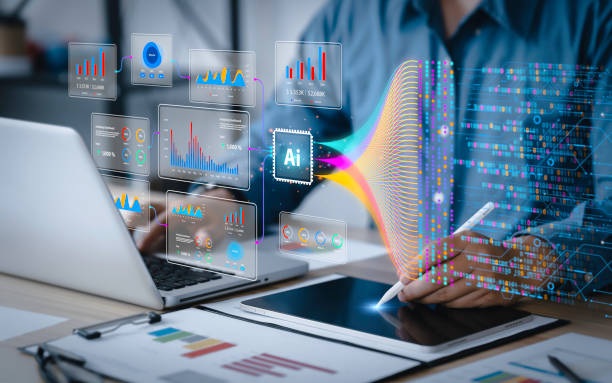The internet is divided into three categories. The first is the surface net. This consists of websites and newspapers. The second is the deep net. This consists of email accounts, medical records, utility bills, etc. It also has social media and all the public research conducted by every university worldwide, among other aspects. I cannot give more details due to my own business secrecy. The third is the dark web, which has quite a bit of illegal stuff going on, but don’t write it off – Bitcoin emerged from here. Usually, search engines like Google only trawl the surface net for information. To some degree, AI uses artificial intelligence gathering and information on the surface and deep net to give you results, generative and other responses.
We make programs on Artificial Intelligence, where information is not available or not legal to obtain, to provide you with an inference on what your competitors, stakeholders, key employees, partners, etc. are doing or are about to do. Instead of flooding you with computer jargon, let me show you by example what can be done.

Suppose your competitor has a car manufacturing facility in a particular county. If it’s a large plant, it is likely to be one in the near vicinity. Now, suppose he were to ramp up production. It is certain you have your sources in the plant and friends. However, as soon as production is ramped up, the consumption of inputs will increase. But they probably have stocks for those, so you will not get the picture immediately. There may be weeks of stock for parts or plates, etc. But there are some inputs that cannot be stocked and will show up immediately.
Like electricity consumption. However, getting data from the Electricity supply company regarding your competitor's usage may be inaccessible and even illegal. But. When your electricity distribution company increases supply, it will draw more from the grid. This data is not confidential and can be easily obtained. The information will not be certain. It will be inferential. It will tell you in seconds to call your friend and ask him to have a drink with you after work. This is a basic structure of inferential computing.


Let me give you a more detailed instance of how an AI model that we independently made for a company panned out. Tata Motors is a large auto manufacturer in India. They also own Jaguar in the UK. 7.4% of their shares were held by LIC of India (a huge state-owned insurance firm). The Tatas were negotiating with TESLA for a joint venture to make EVs in Sanand, Gujarat, India. We made a computer model that used media reports, Tata’s share prices, the future of EVs in India and their export, and a whole lot of other inputs and let AI do the thinking for us. We got some very interesting results. Our AI models predicted that considering the all-time high price of Tata Motor stock, sometime in the near future, LIC will divest some of their holdings; how many and when could not be predicted (LIC sold 2.4% of their holding 2 weeks after our results).
The model also said that the reason it would do so is that considering the geo-political situation and media reports (which were instantly accessible to it worldwide and processed into the program), the joint venture with TESLA would go through. LIC would use the funds from the divestment to buy into the new company at ground level as the future lies with EVs, their export potential, and TESLA being the market leader, politically well connected currently and technically superior. To show you what inferential computing can do. AI can factor in a host of data from wide-ranging fields, monitor it on an ever-changing basis, and give you an opinion that would take a team of experts days to do.

Suppose an oil company, which at any time has 50 million barrels of oil on the ocean, each destined for different ports, were to use inferential computing. Due to corporate information systems, it is now common knowledge which company is loading which grade of crude destined for which refinery. Oil has a lousy property; too much can’t be stored. Now, suppose we plug all this data into an AI inferential program. In that case, it will automatically pick up details as ships are loaded, stock positions, transit quantities, refinery pickups, and each and every factor.
And suppose it could predict for you the warming or loosening of a market by this analysis by even .1%. Then 50 million barrels of oil are worth around US$ 4000 million, and .1% is US$ 4 million. And it can give you an updated position as often as you wish at no cost as the program runs by itself. Sure, you have a couple of floors of analysts already doing this, but not this quickly, not this accurately, and not in real time.
Please contact me, let me know what is on your mind and I will let you know if I can help you. No help, no pay.
Contact Us